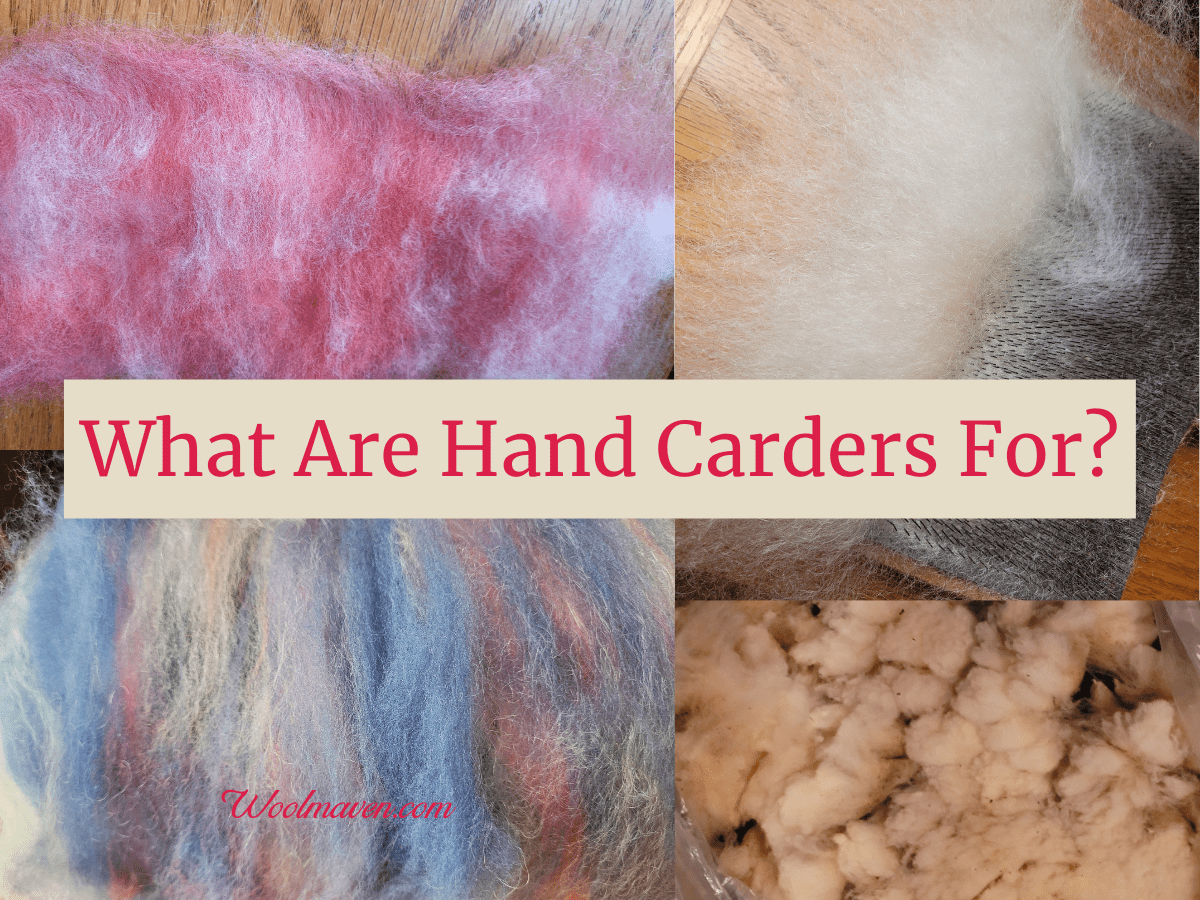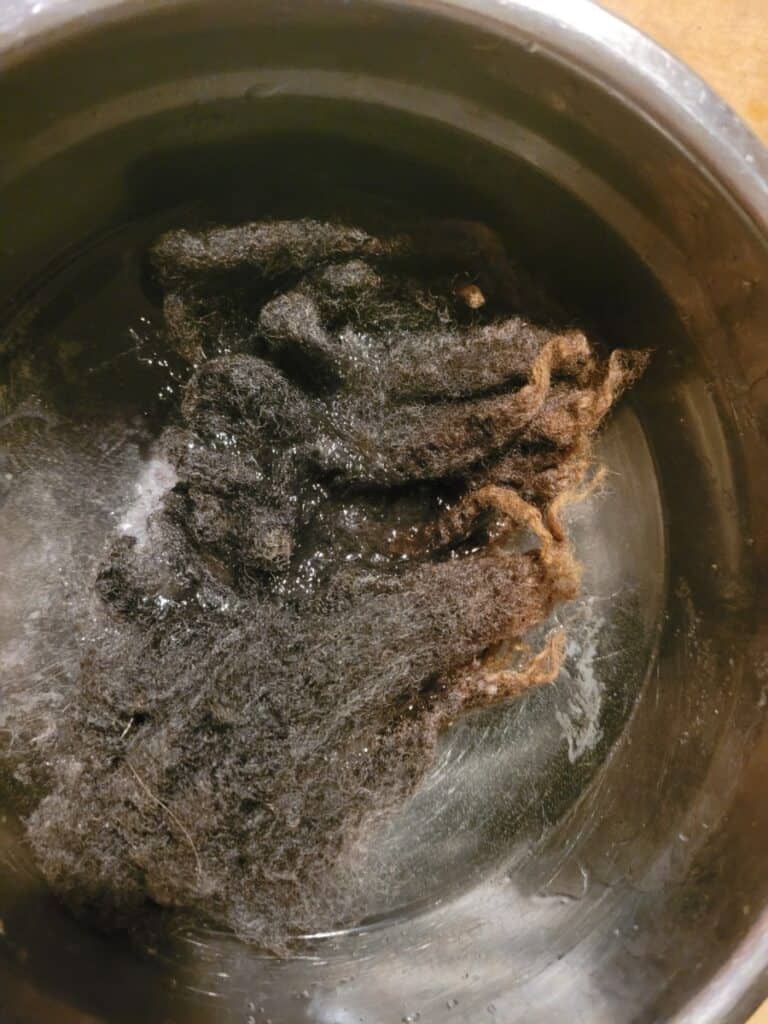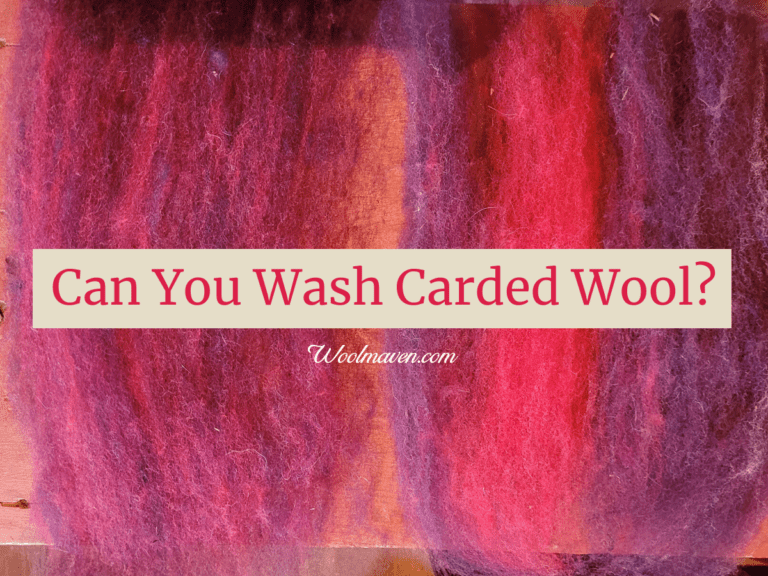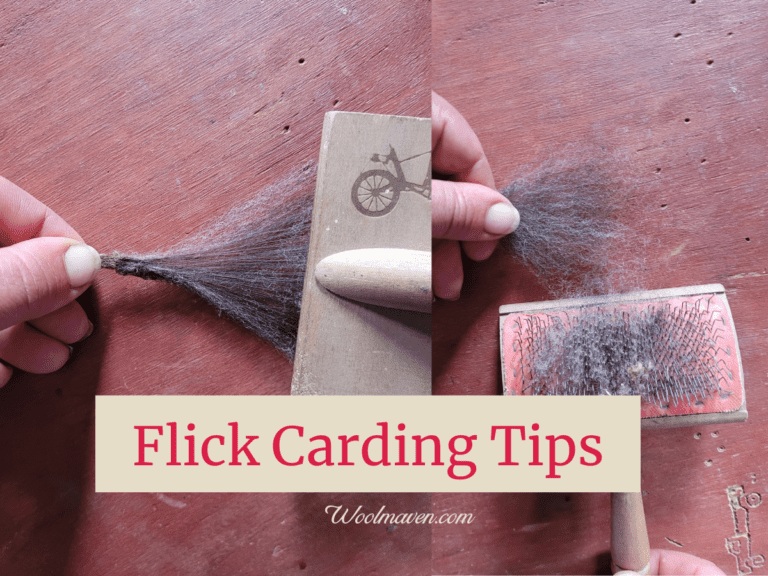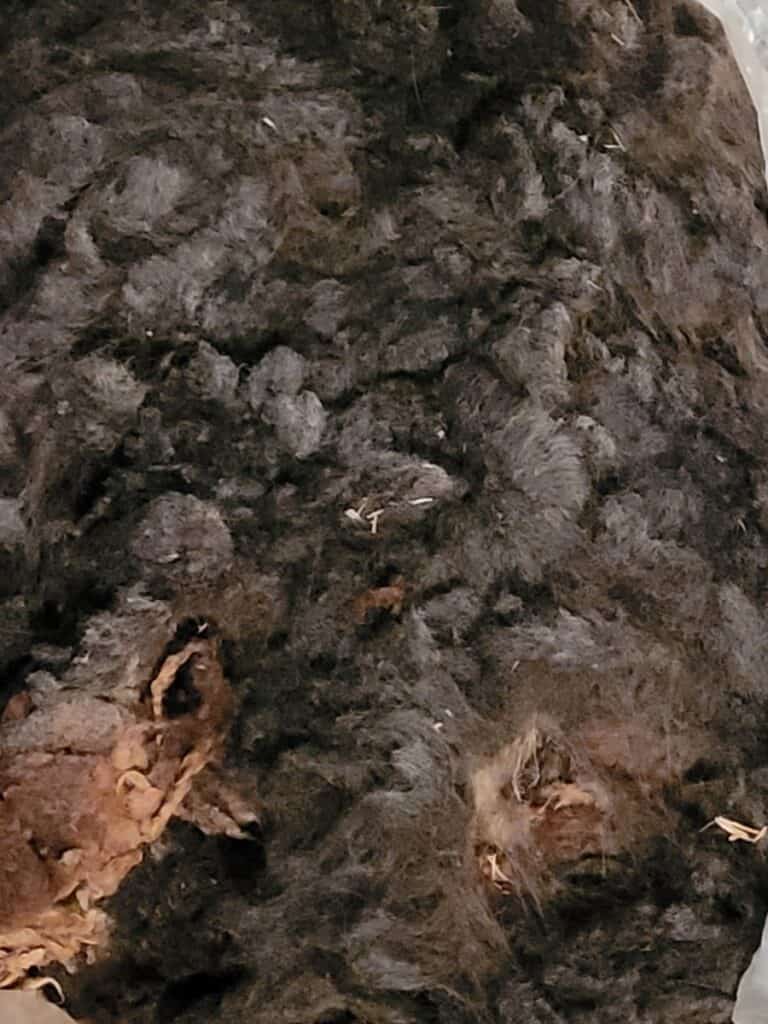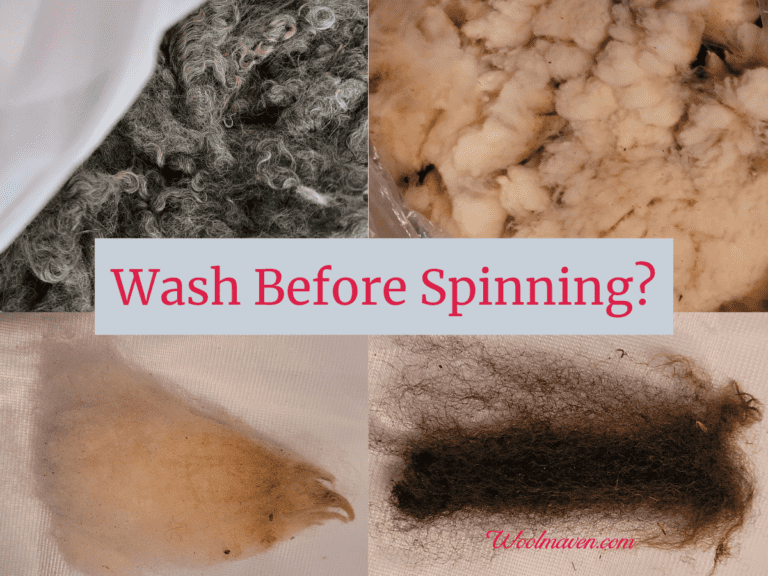What Do You Use Wool Hand Carders For?
If you are a beginner, looking into preparing wool for handspinning or felting, you will have come across many sites and shops with hand carders for sale.
But, you aren’t quite sure yet what exactly hand carders do and why and if you would need them.
What are wool hand carders used for?
Wool hand carders are used to straighten and separate out wool fibers. By carding the wool, it goes from clean fleece to lofty ready to spin or felt batts.
As a beginner, it can be pretty confusing to figure out which fiber preparation equipment does what! How do you know if you need it or not?
Let’s dive into wool hand carders, what they do and your alternatives to see if hand carders are the best wool preparation equipment for you.
| Wool preparation needed | Use hand carders? |
| separate fibers of wool | yes |
| straighten fibers of wool | yes |
| prepare wool at home | yes |
| prepare short fibers | yes |
| prepare medium fibers | yes |
| prepare long fibers | no, use wool combs instead |
| remove debris from wool | yes, small amounts left after hand picking |
| making a batt | yes |
| making roving | yes, has to be taken of carders as roving |
| making combed top | no, must use wool combs to get combed top |
| blending colors | yes |
| blending fibers | yes |
How To Make Roving With Hand Carders will give you tips on turning your carded wool into roving.
Hand carders separate wool fibers
Wool hand carders are used to separate out and straighten wool fibers that will be used for handspinning or felting.
The reasons you need to card fibers of the soon to be spun wool are:
- separate out individual fibers
- open up the wool into a cloud
- drop out any remaining VM (vegetable matter)
- remove nepps (tangles or felted spots)
While not all wool needs to be carded, some can be spun right from the fleece, for most wool and most spinners, this is not the case!
Most wool will be either carded or combed before spinning, in order to put the wool into a lofty cloud that is easy to spin from.
This is especially true for anyone who wants to spin thinner yarns!
If you have not worked with raw (unwashed) or washed but not carded or combed wool, you may not realize how packed together the fibers are before carding.
The clean wool must be carded to get rid of any non spinnable bits, nepps or VM, that are still in the fleece after skirting and washing.
Nepps are from the ends of the wool fiber felting together.
This is caused by abrasion from the wool being constantly rubbed, like wool between the body and the upper leg or the wool under a wool coat that touches the coat.
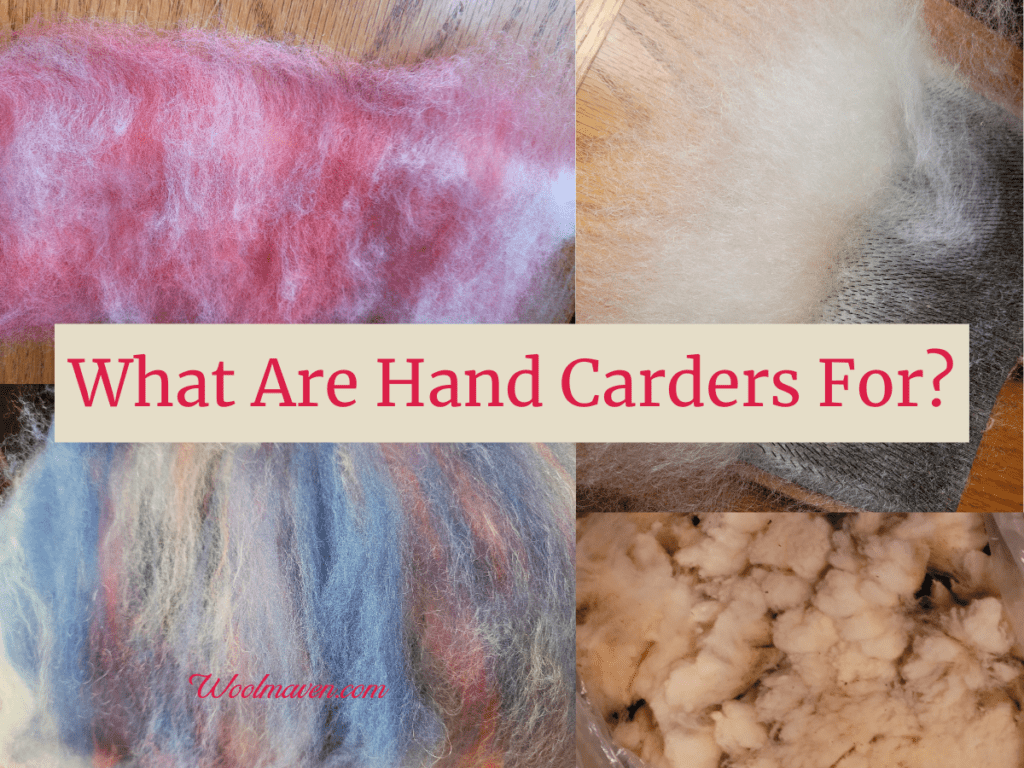
This post contains affiliate links, which means I receive commissions if you choose to purchase through links I provide (at no extra cost to you).
Hand carders can card many types of wool
Hand carders can be used for many types of wool, both short and medium staple length wools, as well as for different breed specific wools.
Hand carders can also be used to blend wool, which can be putting different colors or different types of wool together into one small batt for spinning or felting.
The hand cards that I use are Clemes & Clemes Curved Back Wool Cards. I’ve had them for almost 20 years and use them for all of my hand carding.
Hand carders make roving
When you use hand carders for carding wool you are making the ready to spin wool preparation called roving.
Roving is well separated out wool that is into a long, cloud like fluff that is used to spin woolen style yarns.
The reason that roving can be used to make fluffy yarns is the the wool fibers in the roving are going in many different directions, like a cloud of cotton candy.
When the fibers that are swirling around in the roving are used to make yarn, they end up in the yarn in more of a jumble.
This jumbled arrangement of fibers is what traps air in the yarn and makes it fluffy and warm.
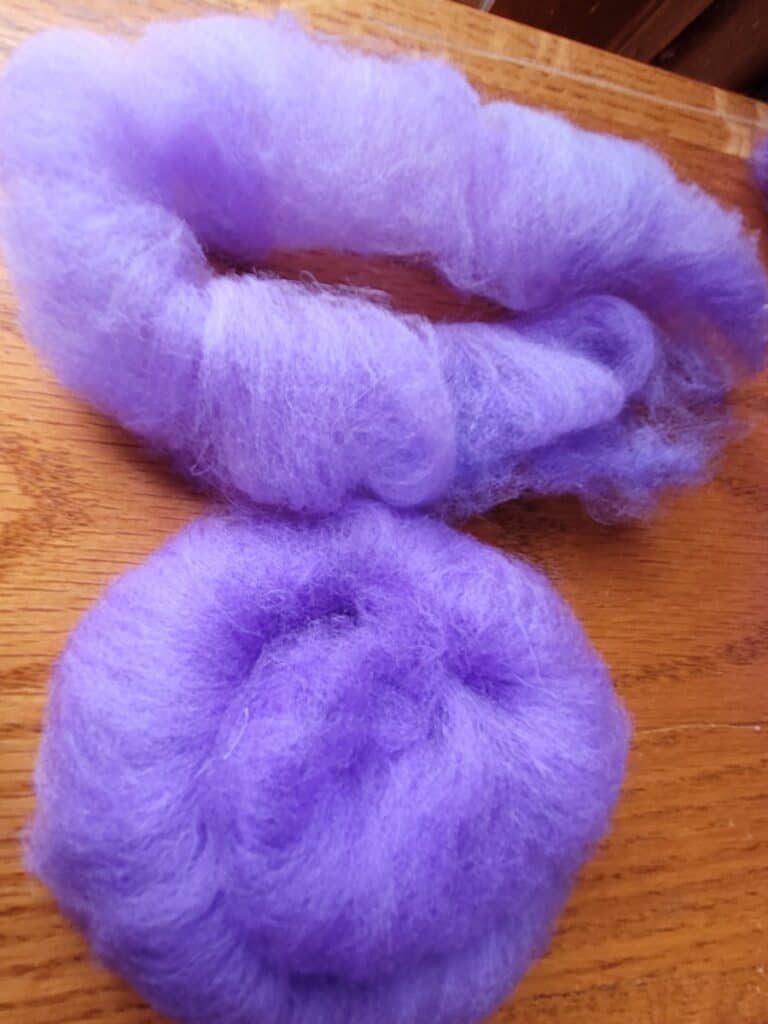
Hand carders can also make rolags
Hand carders can also be used to make rolags, which are small tubes of wool that are used to spin a true woolen yarn.
A well versed hand carding wool enthusiast can make a rolag right on the hand carders, without ever touching the wool, by just using the carders!
A less well practiced hand carding enthusiast can make a rolag by taking the well carded wool off of the hand carders and rolling it up into a tube by hand.
I make rolags with my hands, I’ll need more practice to get up to making hands off rolags like the carding experts!
Rolags vs Roving spells out the differences between roving and rolags so you can decide which one will suit you best.
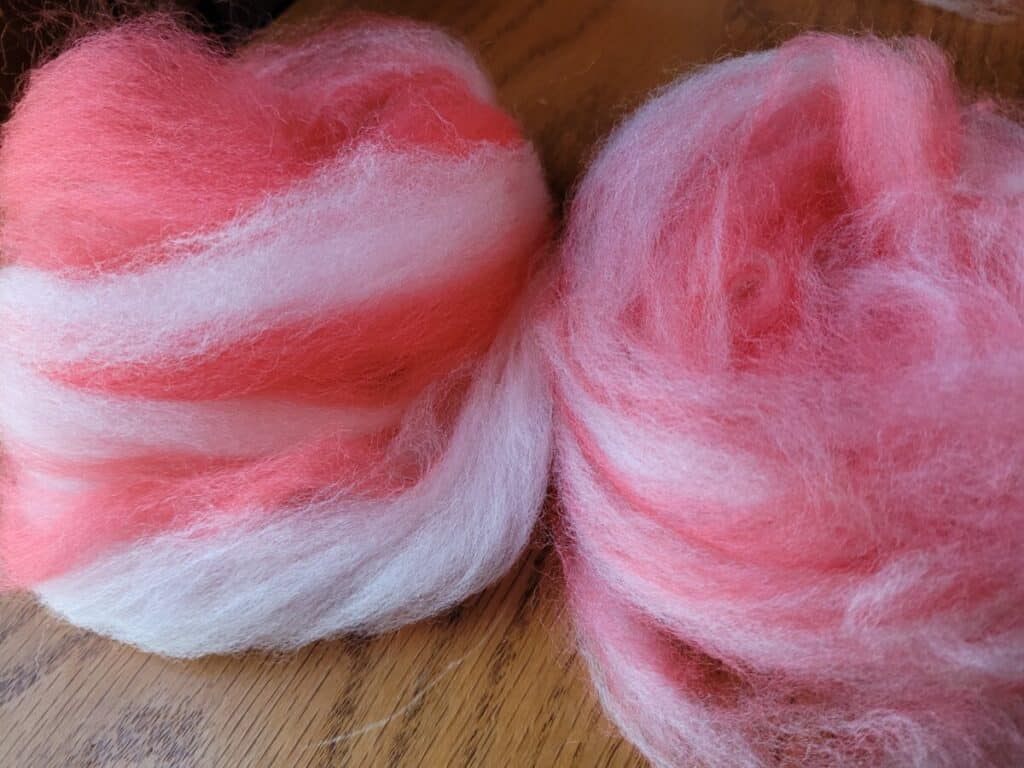
Hand carders make roving, not top
It is important to understand that wool carders are used to make roving, a fluffy airy cloud of fiber, not combed top, which is a sleek and smooth rope of fiber.
If you are working with a wool that you want to turn into a compact and well defined yarn, for example a yarn that will have great stitch definition, then you probably want more of a combed preparation for your wool.
This means that instead of carding your wool, you will be more likely to get the yarn that you want if you prepare your wool with combs.
Like carding, wool combs will also separate out the individual fibers of the wool, drop out any VM and fluff the wool into a spinnable cloud.
You may be thinking “So far, that doesn’t sound too different.” You’re right, but there’s one thing missing, the alignment of the fibers.
Unlike carding, when you use wool combs the resulting fiber, now called combed top, has fibers all running in the same direction.
If you want to have a smooth and well defined yarn, using combed top, rather than roving (which is carded) will make all the difference!
Alternatives to hand carders
There are a few alternatives to hand carders for your wool preparation, depending upon what you are trying to do.
Use a blending board
If you want to blend ready to spin wools or wool and other fibers, you could use a blending board, rather than hand carders.
A blending board is basically a cutting board with carding cloth attached, so you get a larger surface area to work with than if you blended with hand carders.
The blending board does not card wool, it is just used for blending colors or textures together.
A blending board will work great for lightly mixing colors or making gradient batts or rolags.
It’s not so great if you want well blended colors, for instance if you are using blue and yellow to make your own green.
To blend these colors well enough so that they look green, not striped or streaky, you’ll need to use hand carders or a drum carder.
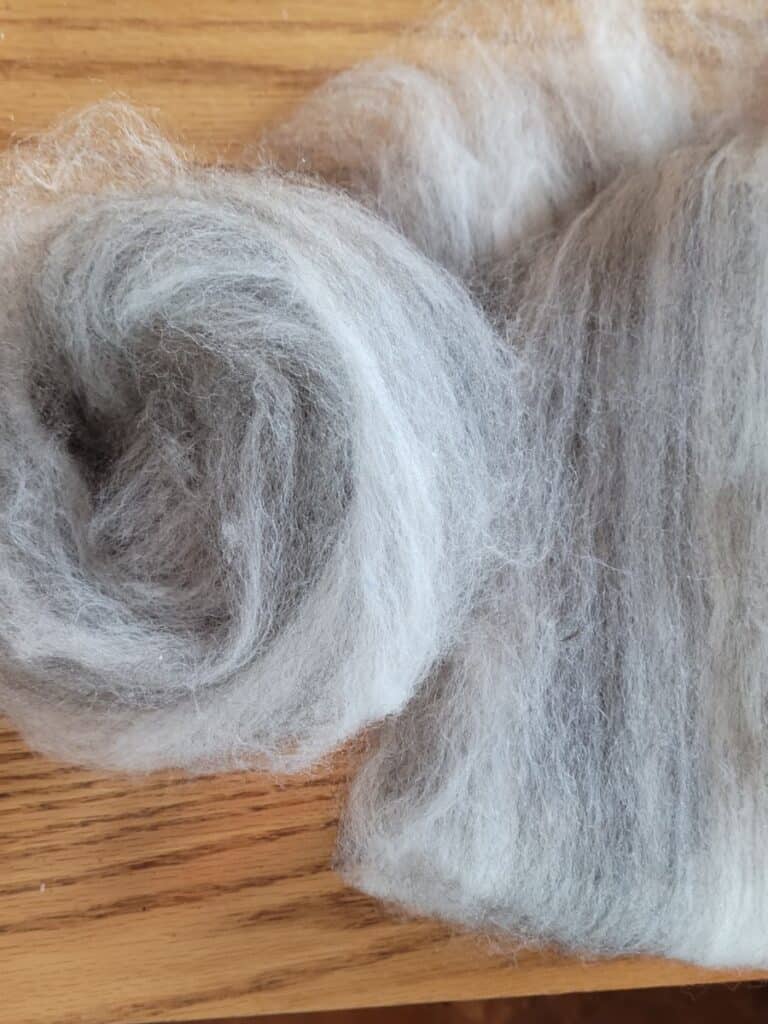
Use a drum carder
Another alternative to hand carding your fiber is to use a drum carder, which can card much more quickly and easily handle fibers of various lengths.
For me, working with a variety of fibers on my hand cards doesn’t turn out so great, maybe I just need to have more patience, but with the drum carder, it’s easy and turns out every time!
The Ashford Drum Carder is the one I recommend to anyone looking for a versatile drum carder. My spinning world revolutionized when I got my drum carder, not kidding. I love it and use is all the time!
The down side of a drum carder is that they are much more expensive than hand carders, but if you need or want the volume, they are wonderful to have!
Is A Drum Carder Worth It? goes into more of the details regarding the costs and benefits of buying a drum carder for carding your wool.
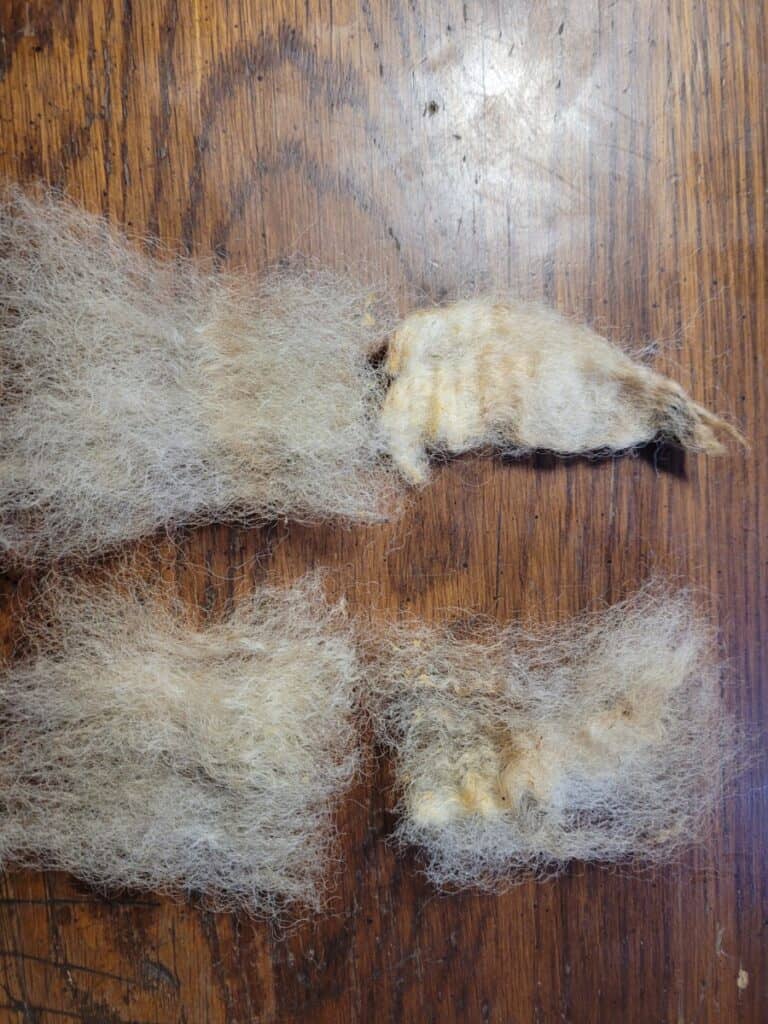
Use a flick carder
A flick carder is a small hand card that is used to open up the ends of the locks of wool. You use the flick carder by itself and card against your leg.
Flick carding will give you spinnable fibers with less poof than full out carding them, which may help you spin more a worsted type yarn.
I also use the flick carder for any wool that needs a bit of extra help to open up before carding.
For instance, the wool from our black ewe has felted tips, which do not get pulled out by carding, but the flick card removes the felted tips so the wool can then be put onto hand cards.
The Joy Of Handspinning has a nice article on Using Hand Carders, if you want to learn more. Have a look around, this is a great site that I come back to repeatedly.

